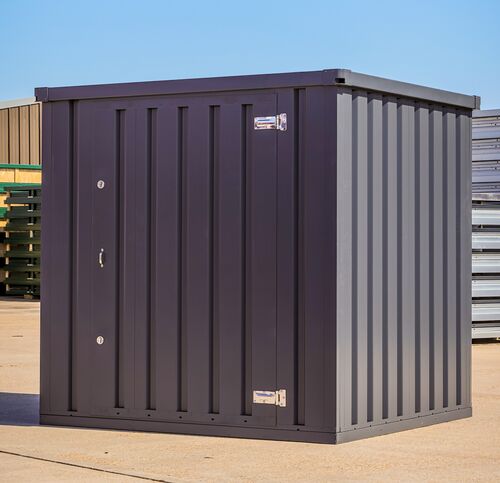Flat pack shipping containers have become a go-to solution for businesses and individuals looking for fast, flexible, and cost-effective structures. Whether you’re building a temporary site office, a pop-up retail space, or need secure storage on the go, choosing the right container is key to ensuring your project runs smoothly.
Here’s a step-by-step guide to help you choose the right flat pack shipping container for your needs.
1. Define the Purpose
Start by identifying what you need the container for:
- Storage (tools, equipment, stock)
- Workspaces or offices
- Retail kiosks or pop-ups
- Temporary housing or site accommodation
- Events or exhibitions
Knowing the primary function will help you decide on the size, features, and level of customisation required.
2. Choose the Right Size
Flat pack containers come in various sizes, typically ranging from 2.1m to 6m in length. Your space requirements, site restrictions, and transportation options will help determine what size you need.
| Size | Ideal For |
|---|---|
| 2.1m (Mini) | Small storage, tools, confined job sites |
| 3m | Compact office, storage on tight sites |
| 4m – 6m | Larger offices, retail use, multi-person setups |
Tip: If you’re unsure, go one size up. It’s more cost-effective than expanding later.
3. Consider Access and Location
Think about where the container will be placed:
- Is the site remote or hard to access?
- Do you need double doors or multiple access points?
- Is ground preparation needed (e.g., concrete pad or level surface)?
Flat pack containers are ideal for tight-access areas and can often be carried in sections by hand, but you’ll still need to ensure the setup area is ready.
4. Decide on Customisation Options
Modern flat pack containers are highly customisable. Consider whether you need:
- Windows for natural light
- Insulation & ventilation for comfort
- Lighting & electrical installations
- Shelving or internal fit-outs
- Branding or signage for retail use
Some suppliers offer pre-configured office or retail setups, while others allow you to choose add-ons individually.
5. Think About Durability
Most flat pack containers are made of galvanised steel, offering weather resistance and strength. However, quality can vary. Ask about:
- Wall thickness and insulation rating
- Wind and water resistance certifications
- Warranty and after-sales support
If your container will face harsh Aussie conditions (heat, wind, rain), opt for reinforced or insulated models.
6. Check Assembly Requirements
Flat pack containers are designed for easy DIY assembly, but consider:
- How many people are needed to assemble?
- Will you need tools or a professional installer?
- Do you need it mobile or fixed long-term?
Some containers can be installed by two people in under two hours — ideal for fast deployment.
7. Compare Pricing & Delivery
Not all flat pack containers are created equal. Compare:
- Base unit price
- Add-on costs (windows, insulation, etc.)
- Delivery fees
- Lead times
Also, check if suppliers offer bulk discounts or rental options if your need is temporary.
Final Tips
- ✅ Ask for supplier reviews and product guarantees
- ✅ Confirm compliance with local building codes (especially for offices or accommodation)
- ✅ Plan for long-term use — even temporary containers can serve for years if chosen well
Conclusion
The right flat pack shipping container is more than a box — it’s a tailored solution that fits your exact needs, site, and budget. With careful planning and the right features, it can save you time, money, and stress across any type of project.
Need help choosing? Many suppliers offer free consultations to guide you through the process — it’s worth asking the pros before you buy.
